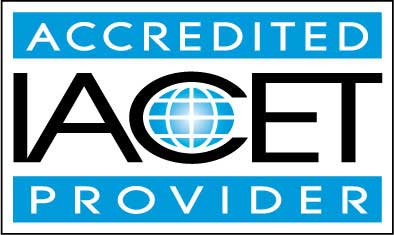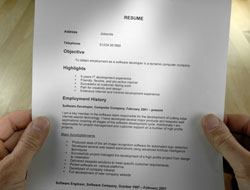Online Class: Accounting Level 2 — Company Financials

no certificate
with CEU Certificate*
-
12Lessons
-
19Exams &
Assignments -
811Students
have taken this course -
7Hours
average time -
0.7CEUs
Course Description
Accounting is the language of business. However, the real language of business lies within accounting--inside the financial statements and financial reporting system. The purpose of this course is to provide a business financial communication tool. Financial statements such as the balance sheet, income statement, statement of cash flow, and the statement of stockholders' equity are all used as communication tools to answer questions about the state of a company's financial well-being; they provide insight into the financial position and the financial health of a company over a defined period of time.
This course walks the learner from the beginning stages of accounting and GAAP principles, through the balance sheet, income statement, statement of cash flow, and statement of stockholders' equity. Next, the course discusses applied financial statement analysis involving the movement of cash flow through a company and its effects, along with financial ratio analysis which greatly helps stock investors make investment decisions. Finally, the course covers accounting fraud, the mechanisms of fraud, how to spot fraud, and even the methods that are used by unscrupulous accountants and business managers to commit fraud or "cook the books".
This course provides learners with a solid understanding of financial statements. This financial knowledge is used by accountants, managers, and investors to make smart and strategic business decisions.
- Completely Online
- Self-Paced
- 6 Months to Complete
- 24/7 Availability
- Start Anytime
- PC & Mac Compatible
- Android & iOS Friendly
- Accredited CEUs

Course Lessons
Lesson 1. Charting Financial Landscapes: GAAP and FASB
 Lesson discussions: Reasons for Taking this Course
Lesson discussions: Reasons for Taking this Course Complete: Lesson 1 Activity
Complete: Lesson 1 Activity Assessment: Lesson 1 Review Exam
Assessment: Lesson 1 Review Exam
Lesson 2. Form 10-Q: The Quick Glimpse at Corporate Financial Status
 Complete: Lesson 2 Activity
Complete: Lesson 2 Activity Assessment: Lesson 2 Review Exam
Assessment: Lesson 2 Review Exam
Lesson 3. Understanding Income Statements
 Assessment: Lesson 3 Review Exam
Assessment: Lesson 3 Review Exam
Lesson 4. Assets, Liabilities, Equity: The Trinity of Financial Clarity
 Complete: Lesson 4 Activity
Complete: Lesson 4 Activity Assessment: Lesson 4 Review Exam
Assessment: Lesson 4 Review Exam
Lesson 5. Stockholders' Equity Simplified
 Assessment: Lesson 5 Review Exam
Assessment: Lesson 5 Review Exam
Lesson 6. Mastering Cash Flows for Business Stability
 Assessment: Lesson 6 Review Exam
Assessment: Lesson 6 Review Exam
Lesson 7. The Art of Cash Flow and Working Capital Synergy
 Complete: Lesson 7 Activity
Complete: Lesson 7 Activity Assessment: Lesson 7 Review Exam
Assessment: Lesson 7 Review Exam
Lesson 8. Financial Ratio Analysis Demystified
 Assessment: Lesson 8 Review Exam
Assessment: Lesson 8 Review Exam
Lesson 9. Strategic Business Analysis: Understanding Key Ratios
 Complete: Lesson 9 Activity
Complete: Lesson 9 Activity Assessment: Lesson 9 Review Exam
Assessment: Lesson 9 Review Exam
Lesson 10. Decoding Business Success: Mastering Financial Ratios for Strategic Insights
 Complete: Lesson 10 Activity
Complete: Lesson 10 Activity Assessment: Lesson 10 Review Exam
Assessment: Lesson 10 Review Exam
Lesson 11. Financial Statement Fraud: Causes and Effects
 Complete: Lesson 11 Activity
Complete: Lesson 11 Activity Assessment: Lesson 11 Review Exam
Assessment: Lesson 11 Review Exam
Lesson 12. Financial Fraud Unveiled: A Deep Dive into Corporate Malpractices
 Lesson discussions: End of Course Poll; Course Comments; Course Comments
Lesson discussions: End of Course Poll; Course Comments; Course Comments Assessment: Lesson 12 Review Exam
Assessment: Lesson 12 Review Exam
Learning Outcomes
- Identify and describe the key principles of GAAP, including accrual basis, consistency, economic entity assumption, and monetary unit principle, and apply them to real-world scenarios.
- Define and explain the five foundational types of accounts in modern accounting, including assets, liabilities, equity, revenues, and expenses.
- Identify and differentiate between SEC Form 10-K and Form 10-Q in terms of reporting requirements and the type of information they contain.
- Recognize the importance of accurate financial statements for strategic decision-making and transparency among stakeholders.
- Demonstrate the ability to accurately itemize and interpret each major component of an income statement, including revenues, expenses, and net profit.
- Differentiate between the single-step and multi-step income statement formats and explain their advantages and limitations in financial analysis.
- Analyze a company's financial health and solvency by interpreting the balance sheet's disclosure of assets, liabilities, and stockholders' equity according to established financial metrics.
- Identify and categorize assets and liabilities on a balance sheet to evaluate a company's financial position at a specific point in time.
- Define and describe the key components of the statement of stockholders' equity, including contributed and earned capital.
- Demonstrate the ability to analyze the impact of financial transactions, such as stock buybacks and dividends, on shareholders' equity.
- Analyze and interpret a company's statement of cash flows using direct and indirect methods to assess financial health and operational efficiency.
- Define and differentiate the three categories of cash flows—operating, investing, and financing activities—and explain their role in financial decision-making.
- Define and compare the concepts of cash flow and working capital, illustrating their distinct roles in assessing a company's financial health and liquidity.
- Demonstrate mastery of lesson content at levels of 70% or higher.
Additional Course Information

- Document Your Lifelong Learning Achievements
- Earn an Official Certificate Documenting Course Hours and CEUs
- Verify Your Certificate with a Unique Serial Number Online
- View and Share Your Certificate Online or Download/Print as PDF
- Display Your Certificate on Your Resume and Promote Your Achievements Using Social Media

Choose Your Subscription Plan
No Certificate / No CEUs
This course only
| Includes certificate | X |
| Includes CEUs | X |
| Self-paced |

|
| Instructor support |

|
| Time to complete | 6 months |
| No. of courses | 1 course |
Certificate & CEUs
This course only
| Includes certificate |

|
| Includes CEUs |

|
| Self-paced |

|
| Instructor support |

|
| Time to complete | 6 months |
| No. of courses | 1 course |
Certificates & CEUs
Includes all 600+ courses
| Includes certificate |

|
| Includes CEUs |

|
| Self-paced |

|
| Instructor support |

|
| Time to complete | 12 Months |
| No. of courses | 600+ |
Certificates & CEUs
Includes all 600+ courses
| Includes certificate |

|
| Includes CEUs |

|
| Self-paced |

|
| Instructor support |

|
| Time to complete | 24 Months |
| No. of courses | 600+ |
Related Courses
-
 32 hours
3.2 CEUs
Accounting & Bookkeeping 101 for Everyone
+ More Info
32 hours
3.2 CEUs
Accounting & Bookkeeping 101 for Everyone
+ More Info
-
 5 hours
0.5 CEUs
Personal Finance 101: How to Manage Your Money
+ More Info
5 hours
0.5 CEUs
Personal Finance 101: How to Manage Your Money
+ More Info
-
 7 hours
0.7 CEUs
Accounts Payable Training
+ More Info
7 hours
0.7 CEUs
Accounts Payable Training
+ More Info
-
 5 hours
0.5 CEUs
Accounts Receivable Training
+ More Info
5 hours
0.5 CEUs
Accounts Receivable Training
+ More Info
-
 7 hours
0.7 CEUs
Understanding Financial Statements
+ More Info
7 hours
0.7 CEUs
Understanding Financial Statements
+ More Info




